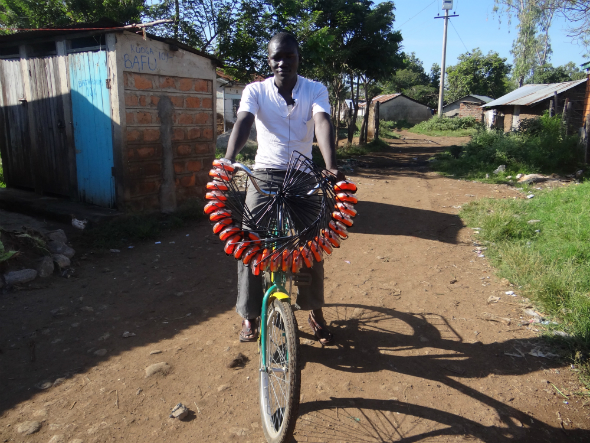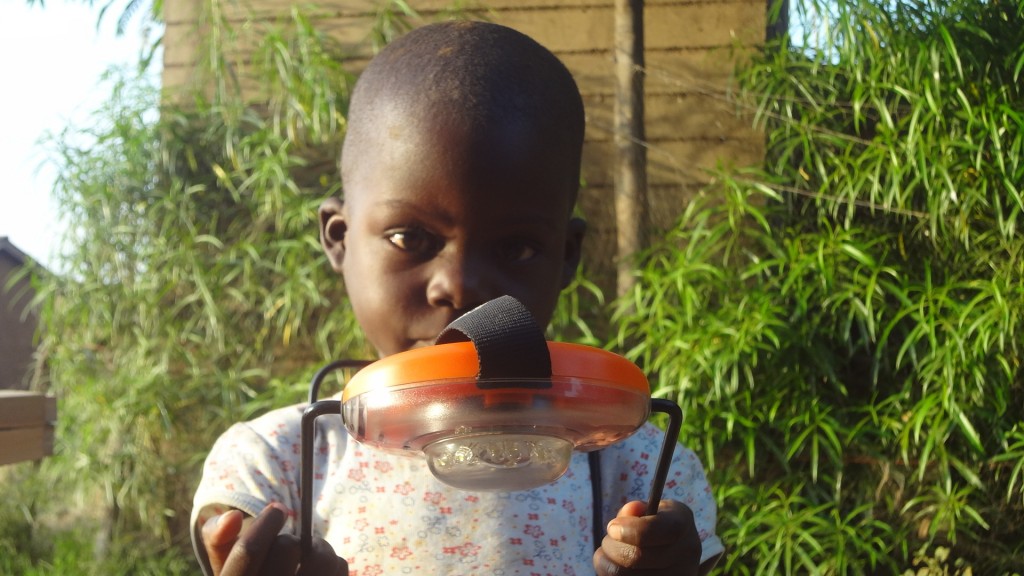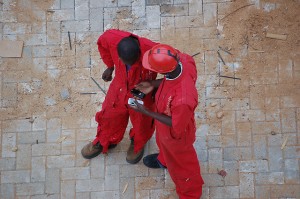Search Results for Tag: kenya
Are drones the next weapon against poaching?
In 2013 South Africa lost more than 1000 rhinos to illegal hunting. In other countries such as Vietnam, rhinos are already extinct. Now, a US company hopes to launch unmanned drones equipped with cameras to frighten off poachers.
Airware is a company that develops a new autopilot system for commercial drones. Those drones can be used for many different purposes, the company says. Such as inspections, search and rescue operations – or to watch out for poachers across large areas of African safari parks.
The company has conducted a field test in Kenya with drones designed to protect rhinos. First results suggest they may be a promising tool for wildlife conservation.
But why in Kenia? The country lost 50 rhinos in 2013. The team went to Ol Pejeta which is East Africa’s largest black rhino sanctuary. Set up to act as a deterrent and for surveillance the drone was sending real-time video and thermal imaging feeds to the rangers on the ground. The drone navigates autonomously, along a prescribed flight route and requires just one person to operate, who can also instruct the aircraft what to look out for with the on-board camera.
The test prototype “surpassed all our expectations,” the team said afterwards. Just maybe tech innovations like these could help to preserve threatened species.
And it is an effort, that is obviously more realistic than a concept by artist Robert Chew. He thought about robots that take the forms of (poached) animals to blend in with the wildlife and help capture poachers.
A phone call against climate corruption
Fighting climate change has spawned a massive industry with vast sums of money sloshing around relatively new and untested channels. That has opened the door to bribery and corruption. Our reporter Franziska Badenschier has more.
Transparency International’s anti-corruption hotline in its Kenya office recently received a disturbing call. The caller claimed that someone was planning to build a private crematorium on a piece of public land on the coast and clear mangroves in the area. Judy Ndichu and her colleagues at the “Advocacy and Legal Advisory Center” at Transparency International in Nairobi were alarmed.
“For one, mangrove forests are a fragile ecosystem and on the other hand, they form a barrier to protect the mainland since most coastal areas in Kenya are threatened by rising sea levels. In addition, this is a protected forest area,” Judy Ndichu said. She was speaking at a recent event organized by the Forum for International Cooperation for Sustainable Development (f.ize) in Berlin.
The call prompted Ndichu and her colleagues to dig deeper into the issue. “We found that a million Kenyan shillings (around 8,800 Euros) had changed hands in the form of bribes so that the case wouldn’t get out in the public sphere,” Ndichu, who works for the “Climate Finance Integrity Program” at Transparency International, said. Ndichu’s team handed over the case to the National Environment Management Authority and Kenya’s Ethics and Anti-corruption Commission. “Finally, the project was stripped of its license,” Ndichu said. It may sound like a small victory against corruption in the environment and climate sector. But for Judy Ndichu, that’s better than not reporting it at all.
The case is by no means an exception in the booming sector that has emerged to fight climate change. The issue was the focus of the “Global Corruption Report in 2011. “The efforts to rein in climate change and react to it will come with a huge price tag,” the report said. When huge sums of money flow through new and untested financial markets and mechanisms, there is always a risk of corruption, it said. Estimates suggest that $700 billion will be invested by 2020 in measures to reduce greenhouse gas emissions and slow the pace of climate change. And each year, at least $250 billion in public funds will flow through channels that are “new, relatively uncoordinated and untested,” the report said, adding the situation was certainly vulnerable to bribery and corruption.
That’s why the African Central Bank, the United Nations Environment Program, the World Bank and other international institutes have long grappled with the best way to spur honest people to report about corruption and abuse in the fight against climate change. “In Kenya, for instance, these multilateral institutions have set up their own complaint cells,” a member of Transparency International in Berlin said.
But that could lead to problems too. A potential whistleblower in Kenya could be forgiven for being confused about which office to approach with a complaint. Besides, how do you ensure that the whistleblower is protected so that he’s not hounded later by those he exposes? Transparency International’s answer to that is setting up a central hotline.
“The anti-corruption helpline. Call 0800-720-721 or text 3129 for FREE assistance on CORRUPTION-related cases.” That’s what it says on stickers plastered, for instance, on taxis in Kenya. Since the end of last year, Kenyans can anonymously call the number to complain about corruption and bribery in any sector whether climate, health or education.
So what’s the watchdog’s verdict six months on? “We get an average of 64 calls each month and around five of those relate to climate issues,” July Ndichu said. The land grabbing case on the coast was one of them. Judy Ndichu hopes the hotline will prompt further calls and shed light on shady deals and corruption in the country.
Renting or buying – A difficult decision!

“Take a gap year and save the planet!” This could be the motto of the Kenyan based organisation “Ecofinder”. Founded in 1995 the Kenyan grass roots organisation helps communities around Lake Victoria to lead a more sustainable life. GLOBAL IDEAS has invited Nicolas, one of Ecofinder’s numerous volunteers, to write about his experience:
As a volunteer one of my main tasks is the so called “green energy promotion”. Here I try to drive the distribution of solar lamps forward. In this field we are running two different projects. The first one is called “Right Light”, it gives users of sooty kerosene lanterns the opportunity to rent a solar lamp over night for a very low price. So they don’t need to buy more expensive, health and environment damaging kerosen. The second project we call “Villageboom.” Here we encourage people to buy solar lamps as an investment in their future.
The major difference both is obvious, a person is either the owner of a solar lamp or the person rents the lamp. Both have advantages and disadvantages. For example: Almost everybody can afford the rent of one solar lamp for one night (about 9 Euro Cent). Another positive aspect is that the person who rents does not bear a risk if the lamp fails and is broken. But by possessing a solar lamp users can save a lot more money, because the sun will charge their lamp for free every day. Unfortunetaly for most of the people without electricity a good solar lamp is still very expensive.
In the long run renting a lamp will be more expensive than buying one. After one year of renting a lamp the rent will equal the value of buying a lamp twice. In conclusion I think installment payments are the best solution for poorest who are looking for a clean and cheap light. Therefore it could be very interesting and succesful to combine both concepts. For example our Solar Lamp Entrepreneurs-SLE could offer to their customers to buy a solar lamp bit by bit and not at once.
I’ll keep you updated how our solar lamp distribution is going on in future. But if you have any idea, suggestion or proposal about this issue feel free to comment and to share your thoughts.
In your opinion: “What is the best way to enable as much people as possible a solar lamp?”
What’s the Ecofinder “SLE-MEETING”?
 If you read my last posts, you may figure out the solution by yourself. “SLE” is an abbreviation for our successful program “Solar Lamp Entrepreneurs.” These entrepreneurs charge their solar lamps every day and rent them out each night. Their customers don’t have access to electricity. They come regularly to rent the lamps and even order them in advance to ensure they get one of the much sought-after gadgets.
If you read my last posts, you may figure out the solution by yourself. “SLE” is an abbreviation for our successful program “Solar Lamp Entrepreneurs.” These entrepreneurs charge their solar lamps every day and rent them out each night. Their customers don’t have access to electricity. They come regularly to rent the lamps and even order them in advance to ensure they get one of the much sought-after gadgets.
The reason for the huge demand is quite simple – the solar lamps are brighter, cheaper and, most importantly, safer than the commonly used kerosene lamps. That allows children to read, learn or do their homework even late in the evening. But the lamps also help their parents since they make it easier to work at night and perhaps earn more money for the family.
At the end of last year, we organized our SLE-Meeting. The aim was to give our SLEs the chance to share their experiences and to get more people involved in the project. Of course, it was also great that our new potential SLEs could learn directly from the more experienced ones. It was very interesting to hear what they had to say, both good and bad. In one worst case, someone’s solar panel had been stolen while charging the lamp. On the other hand, one of our Solar Lamp Entrepreneurs has already employed someone to reach out to more people in other areas. Overall, the meeting was a success. Four new SLEs were added to the solar lamp rental project. Each of them got ten lamps as a loan. That means we distributed 40 lamps and, in addition, some of the more experienced SLEs bought new lamps. So the number of solar lamps in this project increased to 200.
We are proud of this number and want to raise it further in 2013. But personally, I want to focus more on selling the solar lamps directly to customers. That’s because for them, the solar lights bring the most financial benefits if they own the lamps themselves.
More about this issue the next time.
No tough stuff from “Tough Stuff”!
“Take a gap year and save the planet!” This could be the motto of the Kenyan based organisation “Ecofinder”. Founded in 1995 the Kenyan grass roots organisation helps communities around Lake Victoria to lead a more sustainable life. GLOBAL IDEAS has invited Nicolas, one of Ecofinder’s numerous volunteers, to write about his experience:
 What do you need for a succesful small-scale solar lamp business?
What do you need for a succesful small-scale solar lamp business?
There are two important things:
First: Highly motivated and convinced people who know that what they are doing will improve their lives and help to protect the environment. And second: Affordable solar lamps of good quality and longlivety.
Ecofinder started his solar lamp projects with 80 “Tough stuff” lamps. But unfortunately we had problems with faulty lamps after just three months. Our “Solar Lamp Entrepreneurs” could not rent as half as much lamps as before. Their business were in danger.
We changed the lamp trade mark. Our new lamps are from “Sun King”. The lamp’s quality is much better. They more or less rescued the project. It was possible to increase the number of solar lamps. At the moment 140 solar lamps from Ecofinder are used in areas around Kisumu nearby the Lake Victoria and the number is rising.
Because of the problems we had with the old lamps, we started buying lamp kits that have to be assambled. Organizing this is my task at the moment. We want to establish a Solar Lamp Workshop where employees learn to assemble the final lamp.
That would create more positive impacts on the community:
Not only we can offer affordable lamps, we would also offer new jobs for unemployed people. In conclusion it is possible to provide more and more people with solar lamps. Furthermore it would be obvious for everyone that eventually broken lamps could be fixed in the workshop.
I hope that my task, the workshop, will be reality in future.










Feedback